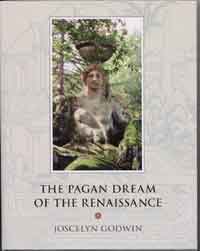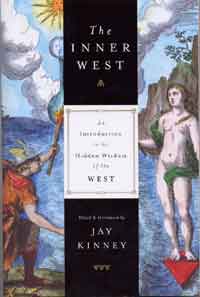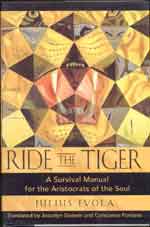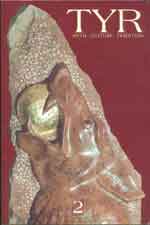
Recent Books Reviewed in Brief
Arthur Versluis
Peter Kingsley, Reality, (Inverness: Golden Sufi, 2003), $19.95 www.goldensufi.org

Occasionally, one comes across a book about which a wide variety of well-known reviewers and readers write glowingly, and Peter Kingsley's Reality is such a work. None other than Huston Smith writes of Kingsley's latest book “Stunningly original, Reality is momentous in its implications.” Seyyed Hossein Nasr writes that this is an “epochal work” that serves as “a guide for the rediscovery of truths which lie hidden in the souls and minds of men and women today—and which urgently need to be brought to light in a world groping in so much spiritual and intellectual darkness. It seeks nothing less than to reveal the original nature of Western philosophy in its true, but long forgotten, sense. And through doing so it forces contemporary human beings to re-examine what it means to be human.” This is not a traditional academic book, but rather belongs more to a tradition of what we may call engaged scholarship—in a very real sense, reading this book represents a kind of initiatory journey for the reader. Engagingly written, but undergirded with a great deal of philological and philosophical scholarship, this work by the author of In the Dark Places of Wisdom offers its readers entry into a transformative understanding of what the ancient philosophers Parmenides and Empedocles were really up to, and what is their significance for us today.
******************
Ghayat Al-Hakim Picatrix: The Goal of the Wise, Volume One. (Seattle: Ouroboros Press, 2000) www.bookarts.org
This is a beautifully produced hardcover edition of the famed Picatrix, brought out by publisher and bookseller William J. Kiesel of Seattle, Washington. It is a complete translation of the work known in Arabic as Ghayat al-Hakim, and a major medieval work in the body of Hermetic literature. Influential in the West through an earlier Latin edition, the Picatrix consists in four books that cover the practice of astrological, talismanic, and astral magic. The Picatrix was known to such major figures as Agrippa, Ficino, and Pico della Mirandola; and it no doubt influenced many other works and figures in the West as well. Thus this English edition is very welcome, not least for the clarity and simplicity of its prose style. This is a work meant as much for a general readership as for an academic audience, and it is worth purchasing, including for its future value as a rare book.
*****************
Godwin, Joscelyn. The Pagan Dream of the Renaissance . Grand Rapids: Phanes Press, 2002. $35 www.phanes.com
 |
Lavishly illustrated, as one would expect with such a subject, The Pagan Dream of the Renaissance is a major new work by well-known author Joscelyn Godwin. Thomas Moore, author of such books as Care of the Soul, writes about this book that it “is a gem of a book, and I mean that with all the resonance of alchemy, beauty, magic, and art. It's an exquisitely written tour of a still rather unknown practice in Europe in the fifteenth and sixteenth centuries when art was linked directly to the mysteries that comprise human life. If you want a doorway to a world far richer than the one of inanimate machinery and mere information that is ours, enter the dream of this book, which doesn't just describe but evokes the genius of those times.” Near the end of the book, Godwin defends the Renaissance against those in the modern era who would disparage it. This is a beautiful and challenging work that we cannot but recommend highly.
*******************
Bamford, Christopher. An Endless Trace: The Passionate Pursuit of Wisdom in the West. New Paltz: Codhill Press, 2003. $19.95 www.codhill.com
Christopher Bamford, the founding editor of Lindisfarne Press, is a well-known editor and translator of such previous books as The Voice of the Eagle, Homage to Pythagoras, and The Noble Traveller, a translation of the Hermetic poetry of O.V. Milosz. In An Endless Trace, we see a new dimension of Bamford's work: his ability as an essayist. Joscelyn Godwin writes about this book that “Admirers of Christopher Bamford have long awaited the great work on the Christian esoteric tradition that they knew he harbored. Now it appears, with all the benefits of ripeness and a life lived with rare spiritual intensity. This is a book to be read and revisited as one's own wisdom grows, hopefully, to meet it.” The Endless Trace includes meditations on the works of the troubadours, Novalis (Friedrich von Hardenberg), and Romantic poets like Keats and Blake, all infused with a Christian mysticism of eros. This is a beautifully written book to which readers will return, drawn in both by Bamford's subjects and by his style.

Kinney, Jay, ed. The Inner West; An Introduction to the Hidden Wisdom of the West. New York: Tarcher/Penguin, 2004. $14.95
"For centuries, Western esoteric traditions have been excluded from the canon of acceptable knowledge. History books rarely mentioned the mystics, Kabbalists, alchemists, Gnostics, and magicians who, in every age, pursured real experiential understanding of the divine. The fruits of their searches remained forgotten. The good news is that the process of recovery has begun. The Inner West resurrects the lost and hidden traditions of the West in a reader-friendly, accessible way with both wit and impartiality. This is a path-breaking, serious work for anyone interested in learning more about the hidden treasures of our spiritual heritage"
--Christopher Bamford, author of An Endless Trace: The Passionate Pursuit of Wisdom in the West
********************
Evola , Julius (Godwin, Joscelyn and Fontana Constance, tr.). Ride The Tiger: A Survival Manual for the Aristocrats of the Soul. Rochester: Inner Traditions International, 2003. $25. www.innertraditions.com
 Ride the Tiger is one of the last books of Julius Evola to be translated into English, and it is among the most important in his ouevre. Written late in his life, Evola's Ride the Tiger has at its center the idea that we live now in a period of decline, and that the best way to handle this decline is through a more or less Tantric effort to harness or ride the tiger of modernity. Rather than defending bourgeois life against the degenerations inherent in modernity, Evola proposes an inner life that is free of circumstance and centered in transcendence. This is a complementary work to Evola's Revolt Against the Modern World, and in both works he is sometimes far from politically correct in his views. Evola is always bracing and provocative, well worth reading whether one agrees with him or not. And Ride the Tiger is an important place to start, though I would suggest reading it along with or after Revolt Against the Modern World. Years ago, I read this book in a German translation with the original Italian book to consult, and it is a luxury to be able to read it now in Joscelyn Godwin's lucid translation into English. If you haven't read Evola before, this is an important work for an intellectual history of the twentieth century, and well worth the purchase price.
Ride the Tiger is one of the last books of Julius Evola to be translated into English, and it is among the most important in his ouevre. Written late in his life, Evola's Ride the Tiger has at its center the idea that we live now in a period of decline, and that the best way to handle this decline is through a more or less Tantric effort to harness or ride the tiger of modernity. Rather than defending bourgeois life against the degenerations inherent in modernity, Evola proposes an inner life that is free of circumstance and centered in transcendence. This is a complementary work to Evola's Revolt Against the Modern World, and in both works he is sometimes far from politically correct in his views. Evola is always bracing and provocative, well worth reading whether one agrees with him or not. And Ride the Tiger is an important place to start, though I would suggest reading it along with or after Revolt Against the Modern World. Years ago, I read this book in a German translation with the original Italian book to consult, and it is a luxury to be able to read it now in Joscelyn Godwin's lucid translation into English. If you haven't read Evola before, this is an important work for an intellectual history of the twentieth century, and well worth the purchase price.
********************
Buckley, Joshua and Moynihan, Michael eds. TYR: Myth--Culture--Tradition. (Atlanta: Ultra Publishing, 2004).Ultra Publishing (P. O. Box 11736, Atlanta, GA 30355 USA) ISSN 1538-9413. $22. No website available.

TYR is more a book anthology than a journal, and represents an entryway not just into a collection of articles but also into an entire, coherent neopagan worldview. TYR begins with an article by Julius Evola, and includes both an article by and an interview with French political philosopher Alain de Benoist, as well as a host of other articles by authors ranging from John Matthews and Stephen Edred Flowers to Joscelyn Godwin. The journal also comes with a CD of neopagan or European-inspired folk music that includes a striking song by a group called Blood Axis (an “archaic futurist” group) based on a speech attributed by Tacitus in Agricola to the Pictish tribal leader Calgacus, first century C.E. For those who like unique folk-derived music, this CD will come as a real addition and as an entree into a different dimension of the neopaganism that the journal as a whole embodies. On its back cover, this “radical traditionalist” journal proclaims that it rejects “the modern, materialist reign of quantity over quality, the absence of any meaningful spiritual values, environmental devastation, the mechanization and over-specialization of urgan life, and the imperialism of corporate monoculture." It stands instead for the “resacralization of the world,” for folk/traditional culture, for the tribal community, and for the stewardship of the earth. In the history of early twenty-first-century esotericism, this journal represents an important perspective that scholars will have to take into account; and for the interested general reader, TYR represents a fascinating entrypoint into a coherent and challenging worldview.